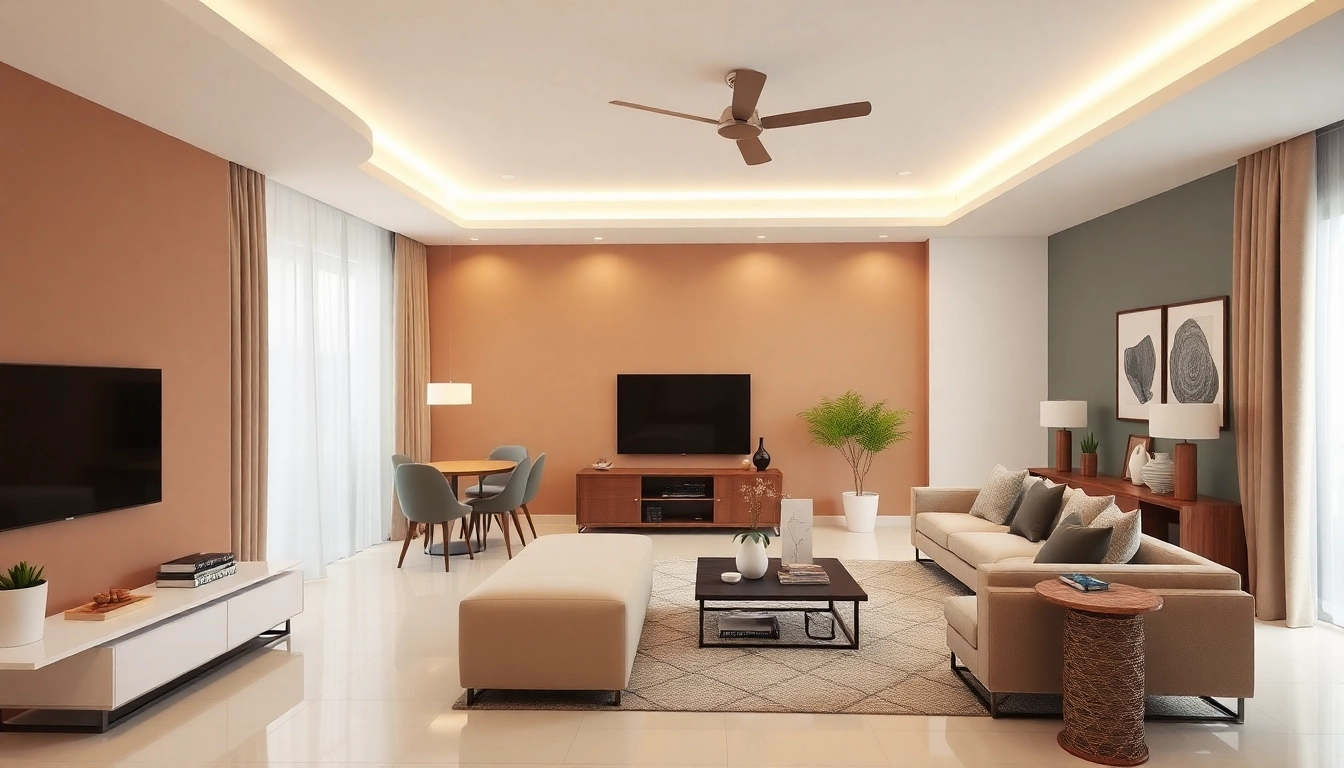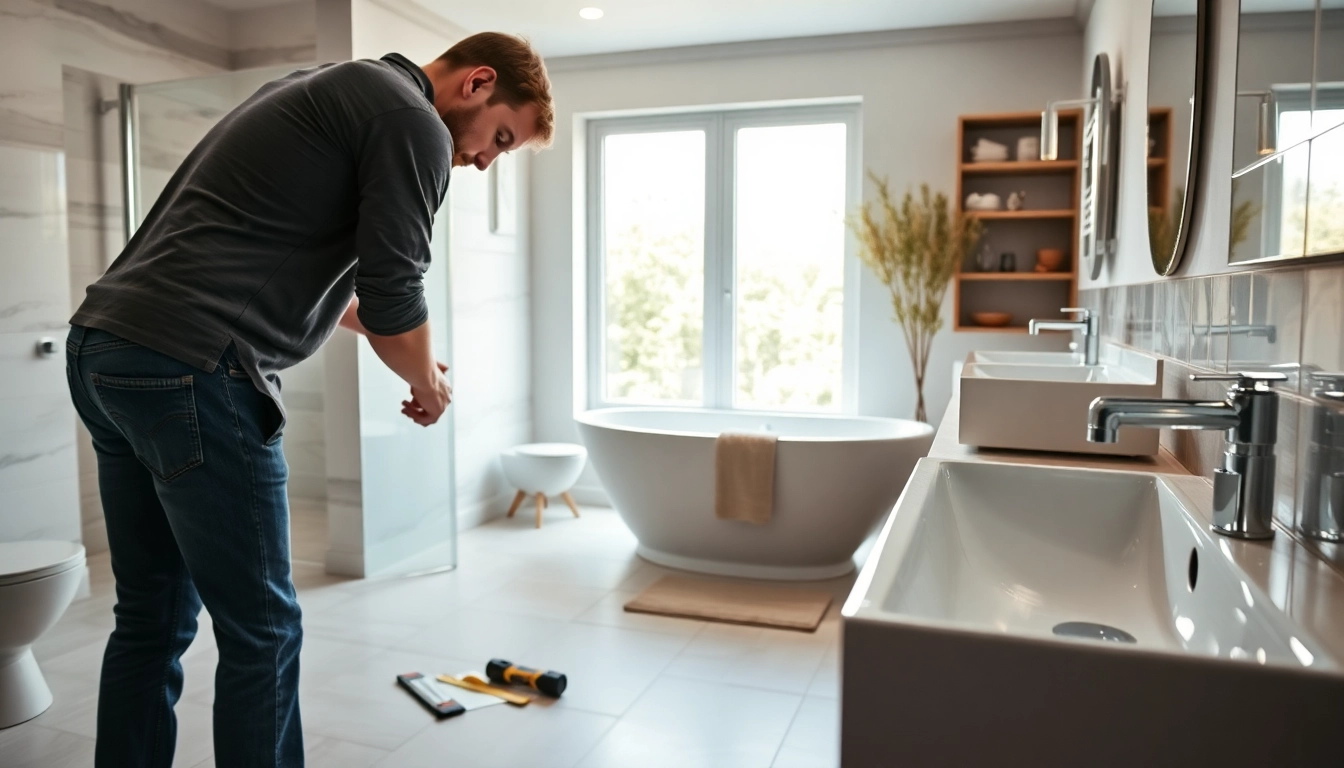
Understanding Entire Interior Design
When it comes to transforming your living space, the concept of entire interior design emerges as a vital subject. It’s not merely about aesthetics; it’s about creating a harmonious environment that resonates with your lifestyle and preferences. Interior design encompasses a broad range of practices; from space planning to color selection, it forms the backbone of how a home feels and functions.
What is Entire Interior Design?
Entire interior design refers to the comprehensive process of ornamenting and organizing every space within a home. It involves developing a cohesive design theme throughout the entire house that promotes unity and style. This includes not only furniture selection but also color schemes, textures, patterns, and arranging spaces to optimize functionality. A well-executed interior design project will balance aesthetics with functional needs, ensuring each room effectively serves its purpose while being visually appealing.
Importance of Cohesion in Home Design
Cohesion is the cornerstone of entire interior design. A unified theme assists in maintaining flow across different areas of a home. Without it, various rooms may feel disjointed, making the house feel less inviting. Cohesion can be achieved through consistent color palettes, material selections, and design styles. For example, using similar hues or textures can bridge the gap from room to room. Designers frequently suggest that choosing a primary color for the entire home can create a calming environment while allowing each space to maintain its individuality through the choice of accessories or accent colors.
Key Elements of Interior Design
When embarking on an interior design journey, consider these essential elements:
- Space: Understanding the dimensions and layout of each room is crucial. It involves measuring and evaluating how different elements will fit and function in the area.
- Color: Color influences mood and perception. A carefully chosen palette can elevate the ambiance of a room and create visual harmony.
- Light: Both natural and artificial lighting play a significant role in design. Effective lighting can enhance colors and textures while setting the overall tone.
- Texture: Incorporating varied textures can add depth and interest to a design. From the smoothness of polished wood to the plush feel of textiles, textures can enhance the sensory experience of a space.
- Form: This refers to the shape and structure of furniture and objects. A mix of forms can create a visually stimulating environment but should be grounded in some level of consistency.
- Line: Lines shape the way a space feels. Horizontal lines often impart a sense of calm, whereas vertical lines can add a sense of height.
Best Practices for Painting Your Entire Interior
Painting the entire interior of your home is a significant undertaking that can dramatically alter its look and feel. Here are some best practices to consider:
Choosing the Right Paint Colors
When selecting paint colors, think beyond current trends and consider how the colors will integrate throughout your home. Neutrals typically work well for the entire interior, providing a versatile backdrop that complements various furnishings and decor styles. If you’re feeling adventurous, consider creating a color flow—a gradual transition from one color to another as you move from room to room. Darker shades are best used in larger spaces or as accent walls, while lighter shades can open up smaller rooms and make them feel airy.
Preparation Steps Before Painting
Preparation is key to a professional-looking finish. Here are steps to take before you begin painting:
- Clear the area: Move all furniture to the center of the room or out entirely. Remove outlet covers, and tape edges where walls meet ceilings and moldings.
- Patch and sand: Fix any imperfections in the walls by patching holes and sanding rough spots. A smooth surface will result in a smoother paint application.
- Prime if necessary: Primer will prepare the walls and can be particularly important when painting over dark colors or bare surfaces.
Techniques for a Flawless Finish
Executing a flawless paint job requires technique and tools:
- Use high-quality brushes and rollers: Quality tools can make a significant difference in application.
- Employ the right technique: For walls, use a “W” pattern with your roller to prevent streaking and ensure full coverage. Use a brush for edges and corners where the roller cannot reach.
- Apply multiple coats: Depending on the color and coverage, two to three coats may be necessary for a professional finish.
Incorporating Style into Your Entire Interior
Once you’ve set the stage with paint, it’s time to think about your style. Here are ways to effectively incorporate style into your entire interior:
Mixing Styles: Modern Meets Traditional
The blending of modern and traditional styles can create a unique aesthetic. To pull this off, choose a dominant style and select accents from the secondary style. For instance, sleek modern furniture can work alongside antique accessories, creating visual intrigue. The key is balance; ensure that one style does not overpower the other.
Furniture Arrangement for a Harmonious Flow
The arrangement of furniture can significantly impact the flow and functionality of a space. Consider these strategies:
- Create zones: Group furniture to define different areas within open-concept spaces.
- Ensure pathways: Keep pathways clear to promote movement throughout the home.
- Consider scale: Ensure that furnishings are proportionate to the room’s size; oversized furniture can make a space feel cramped.
Accessorizing for Impact
Accessories bring personality to your space. When choosing decor items, consider the following:
- Layering: Layering different types of accessories can add depth. For example, mix art, plants, textiles, and lighting.
- Statement pieces: Use larger, statement pieces to anchor a space. A large artwork can serve as a focal point, drawing the eye and injecting character.
- Natural elements: Bringing in elements like wood, stone, and plants can create warmth and tie the design together.
Common Challenges in Entire Interior Projects
Despite planning, challenges can arise during your renovation or redesign process. Here are common issues along with potential solutions:
Resolving Space and Layout Issues
Issues with space can arise for various reasons. Sometimes, rooms may feel cramped or underutilized. To address this:
- Evaluate furniture scale: If pieces are too large, considering swapping them for more appropriately sized items.
- Rearranging: Sometimes simply rearranging furniture can create a more open feel.
- Consider multifunctional furniture: In small spaces, utilizing furniture that serves multiple purposes can significantly enhance functionality.
Budgeting for Entire Interior Makeovers
Budget constraints can limit design choices. To mitigate this:
- Prioritize projects: Identify the most pressing needs and allocate funds accordingly.
- DIY opportunities: Lean into DIY projects for smaller tasks. Painting, refinishing, or even crafting can offer significant savings.
- Shop smart: Look for sales, outlets, or second-hand items that won’t compromise quality but will save money.
Managing Time Effectively During Renovations
Renovations can stretch timelines significantly. To manage your time effectively:
- Plan thoroughly: Have a comprehensive view of the project so every step is accounted for.
- Set realistic timelines: Allow more time than expected for tasks to account for unforeseen issues.
- Hire professionals wisely: If using contractors, vet them carefully to avoid delays from inexperience or unprofessionalism.
Measuring Success: Metrics for Your Entire Interior Design
Once the project is completed, evaluating its success is crucial to understand the impact of your changes. Here are some metrics to consider:
Assessing Aesthetic Appeal
Aesthetic appeal can often be subjective but consider the feedback from family and visitors. You might ask questions such as:
- Does the space feel cohesive and inviting?
- Are the colors and textures working harmoniously?
- Do the chosen accessories complement the overall design?
Understanding Functionality Needs
Evaluate whether the new design meets your functional needs:
- Is the layout practical for daily tasks?
- Does the space accommodate family activities and guests?
- Are there areas that feel unused or awkwardly laid out?
Feedback and Adjustments for Continuous Improvement
Finally, feedback should be an ongoing process, looking for opportunities to continually enhance your space. Schedule regular times to reassess whether the design continues to meet your needs and desires. Consider if furniture arrangements need shifting or whether an updated accessory could refresh a room. Your home should evolve with you, maintaining both beauty and functionality throughout its lifecycle.
In conclusion, mastering entire interior design means embracing a holistic approach that considers all aspects of a home. From ensuring cohesion across different spaces to making the right stylistic choices, each element contributes to the overall ambiance. When executing renovations or new designs, consider the best practices for painting, furniture arrangement, and accessorizing to create a stunning home environment. By anticipating challenges and measuring success through feedback, your home can remain a personalized sanctuary that reflects your taste and lifestyle.






